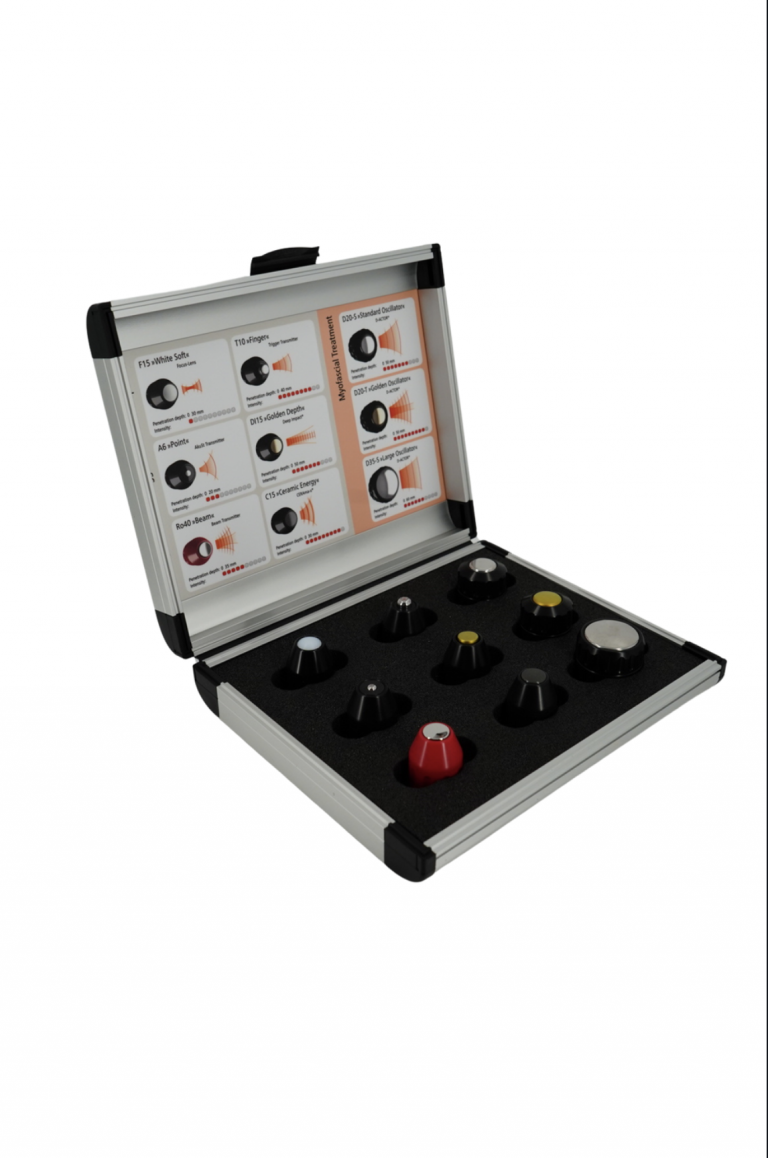By Michael Strøm, Sports Therapist


When you work with Radial shockwave therapy / Pressure wave there are some different aspects that need to be covered in order to achieve success. One of the biggest limitations for clinics working with RSW is the lack of specialized transmitters for the device. Normally a clinic will have 2-3 transmitters available, knowing the strength and limitations it will have.
Today we will run through the most important factors, that you need to consider in each treatment for achieving success.
1. Know your anatomy.
What kind of tissue are you going to do the treatment of?
Is it muscles, is it a tendon, an osteotendinous junction, a ligament, or a bone? Or is it a combination of all the before mentioned areas?
2. Know your pathology.
Are you treating a symptom or the cause of the problem? Is RSW the appropriate tool?
3. Know the physics
How is the tissue going to be affected by the application of radial shockwave? (look at the former post on RSW) and is it relevant for the desired treatment, or should you work with focused shockwaves instead?
4. Know the desired target depth.
What structures do you desire to target, is it superficial, or more deeper laying structures? And what tissue type is in the target area that can affect the perception of the treatment?
5. Define what you want to achieve with the application.
Quite simply, what should be the achieved outcome?
Is it resolving a trigger point, reducing inflammation, increasing circulation, increasing tensile strength, or increasing range of motion?
6. Choose the optimal transmitter
With the different Storz Medical transmitters available from Kinas Medical we have the ability to be very specific in the treatment.
If you want to work in general with mobilizing the tissue the D20-S, D20-T and D35, will be the optimal choice to work with.
If you want to work with Tendons and more specific points the R15, DI15, C15, F15, T10, A6, and Ro40 will be the transmitters to inquire about.
If you want to work with more specialized indications, you can work with the ATLAS or B15 transmitter.
So, what to choose?
If you want to apply shockwave for general applications, the D20-S or D35-S transmitter can be optimal, they are non-specific general energy applicators, meant for general muscular indications.
If you in general want to work on more superficial tendons, trigger points, or muscles, then the F15 (low intensity), C15 (high intensity), R15(medium intensity), F6 (low to medium intensity), Ro40 (medium intensity) could be the transmitters to look into.
As a side note RSW application directly to the bone can be very intense and painful for the clients. Therefore, working with more specific transmitters can enhance patient compliance and reduce the fear of shockwave application due to pain.
If you want to work in deeper laying structures or tendons, the optimal choice will be the D20-T or DI15, T10, because of their ability to reach deeper structures with a high amount of energy.
For the more special indications, such as working between the Metatarsal of the foot or the Metacarpal of the hand, the B15 transmitter has been specially developed.
For working around the cervical spine, Atlas or Jaw, the Atlas transmitter will be your best friend. The energy is transmitted from a metal part of the transmitter to a silicon applicator, which will deliver a sufficient amount of energy very gently to the delicate structures, where a standard transmitter wouldn’t be suitable.
7. Client Education
What can the client expect during and after the treatment? Look back to points 2 and 5.
How many sessions are needed and how to combine them with traditional rehabilitation.
8. Do the Treatment
Do the treatment according to specific predefined protocols to the specific indication. Work with both the symptom and the root of the problem. That is the way to have high client satisfaction and results.
General thoughts on RSW applications
As a shockwave practitioner, you should know how all the transmitters you have available is feeling during application.
So, a tip for you is to set the device to 1.5 bar, 15 Hz, and then try the different transmitter you have in the same spot, with the same settings, so you can feel the difference. That will make you more confident in the use of the different application options.
A good set of transmitters for general application for a manual therapist or physiotherapist could be the D20-S, R15, C15, Di15, F15, and Atlas. That will give the option of treating a very wide range of indications. That would be a good starting point in the journey of efficient RSW application.
References:
Storz Medical application brochures MS Insight application concept

